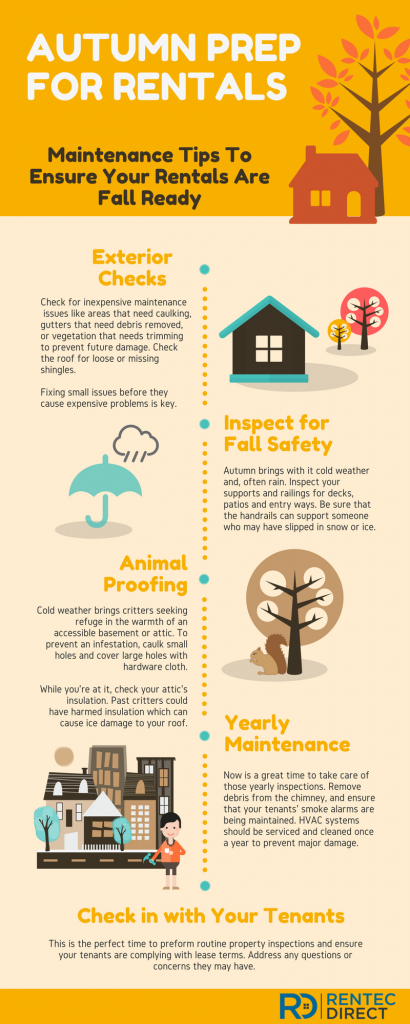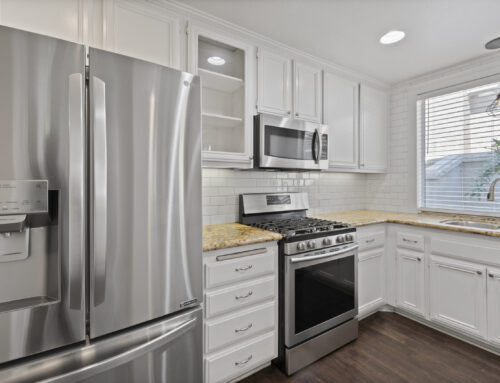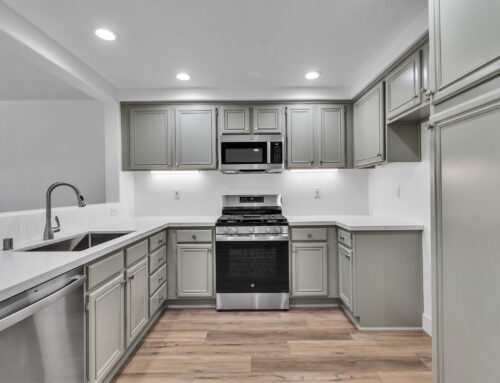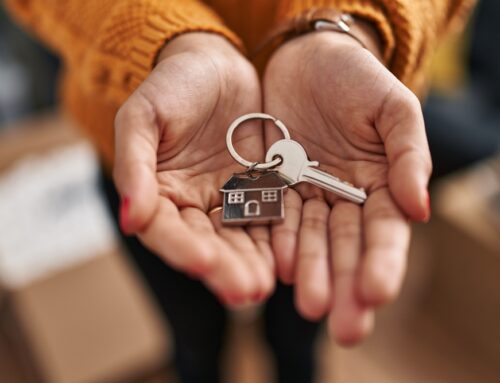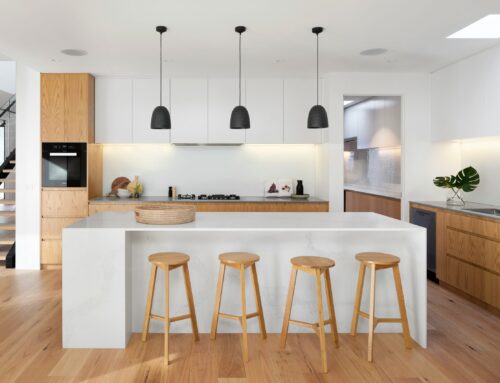Do you own a rental property or several rental properties? Routine maintenance will ensure that your properties are protected from the harsh fall and winter elements, and most can be done without detracting too much from your time or pocketbook. This post will help ensure the process goes as smooth as possible, and that expensive items like your furnace last much longer, which means an increased bottom line for you.
Begin with a Tenant Check-In
It’s important to consistently check-in with tenants, and ensure that they are maintaining the rental unit to lease standards. Seasonal maintenance remains the perfect time to inspect the unit for issues that should be addressed. Ask tenants if they have questions or concerns, and remind them of tenant duties such as changing the HVAC filter or the smoke detector batteries. Checking in also remains the best way to establish open communication. Good communication remains the foundation of a healthy tenant-landlord relationship. Not to mention, when a tenant feels that there is a direct line of communication, they are much more likely to report on a minor but time-sensitive issue before it becomes an expensive repair.
Complete Indoor Maintenance
Windows and Doors: Apply weather stripping or caulk to any needed areas along windows and doors. This will prevent against overtaxing your heating system on those blustery fall days, and will keep your tenant’s utility bills down ensuring more tenant satisfaction with the unit.
Fireplace: If your unit has a fireplace, ensure that the chimney is swept and free of debris. A blocked chimney is an easily avoidable a fire hazard and a smoke inhalation risk. If you don’t already have one, take the time to install an animal-proof chimney cap to prevent further blockage from nesting critters.
Smoke and CO Alarms: Regardless of whether you require your tenants to change the batteries, it is crucial to check that they have indeed kept up with the task, and moreover, did not remove them altogether. Ensure your tenant’s safety—and your legal protection—by ensuring that the alarms are in working order.
Attic: Check your attic’s insulation. Poor insulation can lead to expensive roof repairs. Inspect for signs of small animals that can sneak in looking for a warm place to nest; they can destroy crucial insulation that prevents against ice damming on your roof.
Complete Exterior Maintenance
Gutters: Fall leaves can lead to clogged gutters. Clogged gutters can create ice dams in freezing weather, this can cause the gutters to break entirely. Trim trees or install gutter guards where necessary to ensure that your gutters will appropriately channel water away from the property and prevent water damage to the foundation or structure.
Animal Proofing: Attics and basements are very enticing to rodents and small animals who seek shelter from the cold weather. The Humane Society has recommendations to prevent nesting in your property: ensure animals are not inside the home already (you don’t want to seal them in) and then caulk small holes and staple hardware cloth over larger holes. To stand up against stronger animals, opt for 16 gauge 1×1 steel mesh.
Stairwells, Walkways and Patios: Verify that all supports, stairs, and handrails are secure. Make sure that the handrails can support a person who is slipping due to rain or sleet.
Irrigation Systems: Fall weather means that sprinkler systems can often be reset, since seasonal rains will keep the foliage appropriately hydrated. Follow your manufacturer’s instructions to winterize your sprinkler and irrigation systems. This will protect the functionality of the system and ensure your property looks its best.
AC Units: Depending on where your rental unit is located, be prepared to wrap the outside box units in order to protect it from rust or weather damage.
Trees and Shrubs: Now is an excellent time to trim any branches or vegetation that touches the exterior of the building, as they can lead to damage over time. Protect your investment and ensure that all foliage is maintained before the wet season gets in way.
Hire a Professional
For some costly items on your list, it will pay to have a professional inspect them. Big ticket items like your HVAC system and your roof should be inspected yearly to ensure that any slight damage is dealt with proactively, before a serious issue occurs.
HVAC: Have it serviced, inspected and cleaned. Proper maintenance will extend the life of the furnace, so be sure to remind your tenants to change the filters. To be certain the task is done, consider supplying some extra filters yourself. This makes the task simple for tenants, and is a minor expense for you compared to an expensive system replacement.
Roof: Extreme temperatures, and general exposure to the elements can wreak havoc on your property’s roof. Have a licensed, certified roofing professional inspect the condition of your roof. Simple repairs like loose or damaged shingles can lead to water exposure that can lead to deterioration of insulation, wood and drywall, or make electrical or plumbing systems vulnerable. It’s much simpler to deal with a proactive repair now, than an emergent leak come winter.
Seasonal maintenance may be a chore, but proactive maintenance will ensure that your rental property remains in good shape and your investment is protected for the coming years.
—



